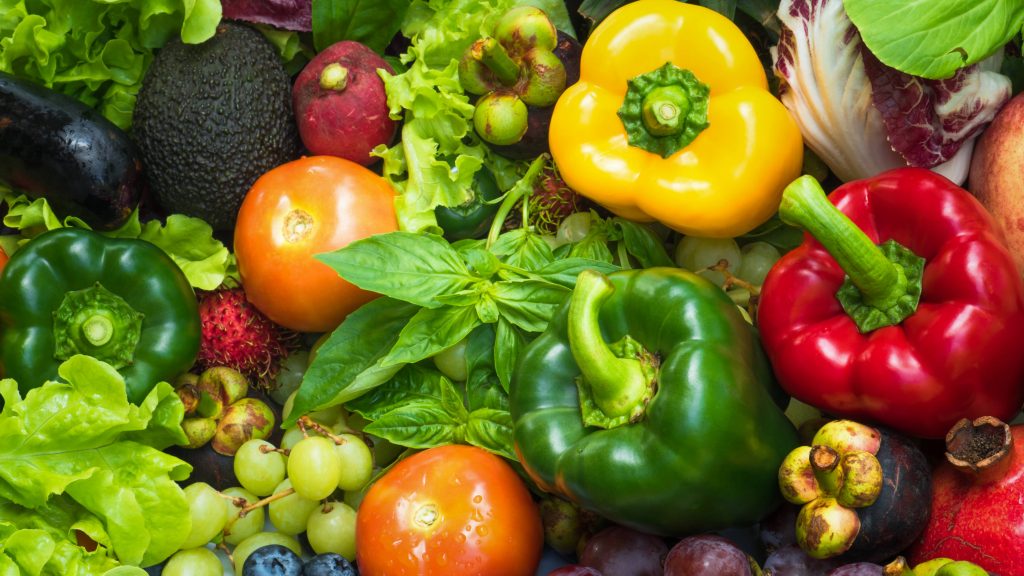-
Mayo Clinic Q&A: Going plant-based: Exploring the myths, health benefits

DEAR MAYO CLINIC: More and more of my friends are following the plant-based diet trend. Is that the same as going vegan? Is it healthy for you? What can I actually eat?
ANSWER: Plant-based foods go beyond a "boring salad." With a whole-food plant-based diet, we focus on eating foods that are primarily coming from plants and that occur in their natural state. Veganism also takes that into account but can incorporate other social and justice factors into that lifestyle.
Certainly, it can be difficult to go 100% whole-food plant-based, especially if that's something you're not used to. My recommendation is to start by introducing an additional fruit, vegetable or whole food into your diet slowly and one at a time. One of the things I recommend is taking what is part of your normal routine and simply adding to it. So, if you're a person who enjoys eating oatmeal for breakfast, perhaps you'll add an additional serving of fruit.
One of the biggest misconceptions people have when they hear about plant-based is that they might not get enough protein because they're so used to eating meat, whether that's from animal protein, dairy products or eggs. But the fact is, we can get a lot of our protein from plant-based foods such as legumes, lentils, tofu, nuts and seeds.
Another way to look at protein needs is to look at what is on your plate. When building your plate, half of the plate should be vegetables, a quarter of the plate can be a protein and the last quarter of the plate could be a carbohydrate. The plate method is visualizing what's on your plate to help meet your daily needs. The protein of choice should be about the size of a deck of cards. Hopefully, in the future, you can supplement some of your animal proteins with plant protein.
Having a variety of fruits and vegetables is equally important as meeting the recommended intake of five servings of fruits and vegetables per day. The colors of different fruits and vegetables signify phytonutrients that can boost your immune system. Buying seasonal products can get us to try new foods that we may not typically go for year-round. Sometimes we might find that we like (or maybe not like) those new foods that we try. We might want to dive deeper into, "Is it the flavor that I don't like or the texture? And if so, can I cook it or prepare it a different way to make it more enjoyable?"
For example, I am very sensitive to raw broccoli. It has a strange aftertaste to me. But then I discovered broccoli sprouts, which are broccoli plants that are 3-5 days old. Broccoli sprouts carry a cancer-protection effect. So I'm able to add broccoli sprouts in place of having the full adult broccoli. I'll typically use it on top of a salad or add it to a sandwich as an added crunch. It's a way I can get my broccoli nutrients in.
One of my favorite go-to ingredients for protein are lentils. Lentils provide an adequate amount of protein and are quite easy to add to any dish. I like to add lentils to any chilis or soups that I'm making as a thickener or as a meat alternative for meatless meatballs or tacos. Lentils are an important part of a plant-based diet because they're not only high in fiber but also contain great sources of potassium as well as protein. They've been shown to lower the lipid profile in people who are overweight or obese with type 2 diabetes. They're also a great source of prebiotics to help diversify the gut and protect it from digestive diseases.
Another important part of the whole-food, plant-based diet is the incorporation of mushrooms. Interestingly, mushrooms are not vegetables or fruit, but a fungus. These fungi have been well studied throughout medical nutrition, and they've been shown to have immune-boosting properties supporting brain health and antioxidant effects. Mushrooms have a high-flavor profile and can add extra flavor to any dish, especially when cooked. They also can take on all the flavors of the seasonings around them.
The ultimate goal is to nourish our bodies in a way that is sustainable and that works for us. Having a completely 100% whole-food, plant-based diet might not be for everyone, but we do know that incorporating fruits and vegetables in the diet serves beneficial and long-term health effects. So, if that means adding one thing at a time, or shying away from one of those foods that we typically avoid, such as red meats, dairy, or unnecessary oils and fats, then we do so slowly. If you get stuck at any point in the process, you can always talk to your healthcare team for extra assistance. — Christine Nguyen, D.O., Family Medicine, Mayo Clinic, Jacksonville, Florida







